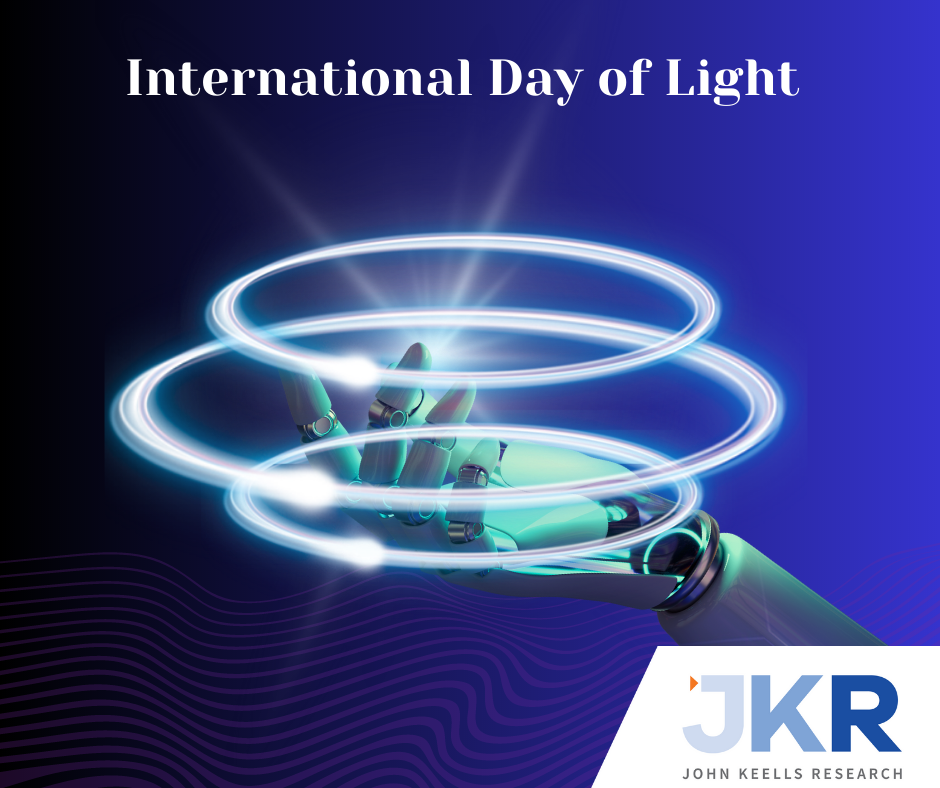The Sun has been the source of light and energy since life evolved. Early days, humans needed light from the sun, stars, fire or lamps for agriculture, cooking, drying and a gamut of other day to day activities. It is safe to say that the ability to harness the power of light has helped us in paving a way into modern civilization and evolution. Since Thomas Edison patented the first electric bulb in 1879, artificial light has come a long way and become ubiquitous. Its applications have expanded into multiple sectors such as medicine, telecommunications, education, energy, culture and many more.
As the industrial revolution accelerated, inventions and discoveries based on light escalated. Laser light was discovered. This provided numerous applications in cuttings, heating, welding, and it provided impetus for further research opening new possibilities. Quantum physics, which was another advancement in the study of light, describes that light exists in both forms as waves and particles. Based on quantum theories the energy of light is released in both forms and further expanded the applications that enabled light to be used in various requirements. NMR, electron microscopy, particle accelerators, X-ray crystallography and presently quantum computing and tunnelling are new advancements stemming from the study of light. These are used in day-to-day applications to drive research and development further in science.
Currently light has been used in more modern and sustainable techniques to minimize the effect of greenhouse gas emissions, produce biodegradable and renewable solutions. One such notable advancement based on converting natural light is the development of solar cells that has been exploited largely in the world. Solar cells are globally accessible, this maximizes the use of light as an energy source and minimize the use of fossil fuels. Agriculture is another field that has a key dependence on natural light. Vertical Farming is an innovative approach that leverages artificial light for farming applications. In essence, plants absorb different wavelengths of light at different growth stages. Therefore, LED lamps (Agricultural Lighting) can emit a specific wavelength to optimize plant growth and yield by providing ideal conditions. However, this changes from plant to plant due to the physiological and biochemical differences. It can also be noted, compared to using conventional lighting for plant growth agricultural lighting can increase energy efficiency and cost effectiveness of agriculture.
As to recognize the important role that light and technologies enabled by light portraits, the International Day of Light is commemorated on the 16th of May. The day itself is the anniversary of the discovery of artificial laser light by Theodore Mainman in 1960. This day is a reminder to allow scientific communities around the world to communicate and collaborate to create a bright and sustainable future2,3 whilst supporting the UNESCO to achieve Sustainable Development Goals (SDGs) with the help of light and the related technologies.
At John Keells Research, we commemorate the International Light Day and the light role plays in scientific discovery, innovation and sustainable development. We strive to contribute to the society by driving innovations in developing technologies that create an impact in our core areas by leveraging light and related technologies among others.
- Al Murad M, Razi K, Jeong BR, Samy PMA, Muneer S. (2021). Light Emitting Diodes (LEDs) as Agricultural Lighting: Impact and Its Potential on Improving Physiology, Flowering, and Secondary Metabolites of Crops. Sustainability. 13(4):1985. Retrieved on: 11th May 2023 from https://doi.org/10.3390/su13041985.
- UNESCO. (2023). International Day of Light. UNESCO. Retrieved on: 14th May 2023 from https://www.unesco.org/en/days/light
- UNESCO. (2023). International Day of Light. UNESCO. Retrieved on: 10th May 2023 from https://www.lightday.org/
- Wolken J.J. (1995). Chapter 2: The Physical Nature of Light: The Interaction of Light with Matter and Molecules of Life. Light Detectors, Photoreceptors and imaging systems in Nature. Oxford University Press, New York. Retrieved on: 15th May 2023.

